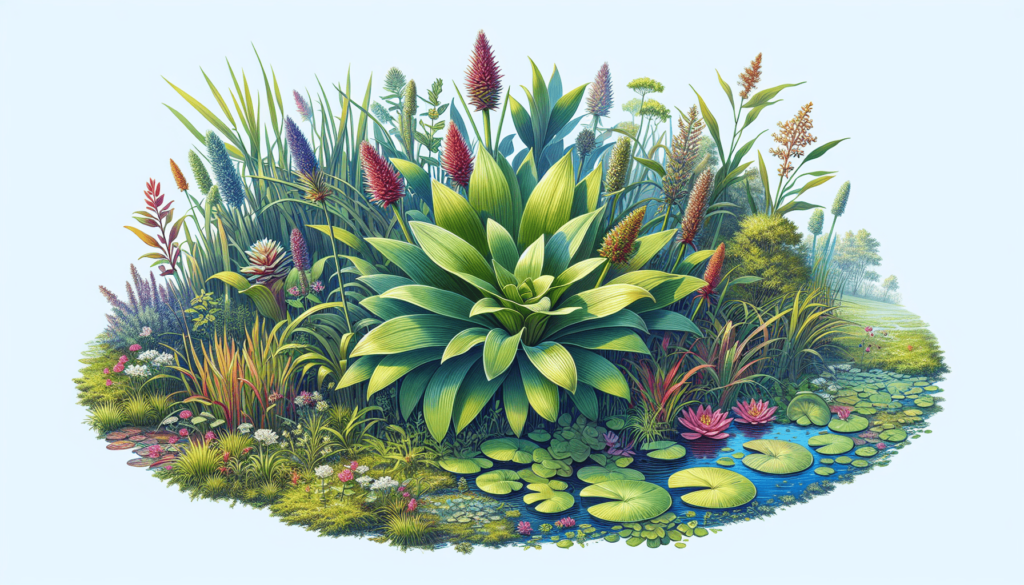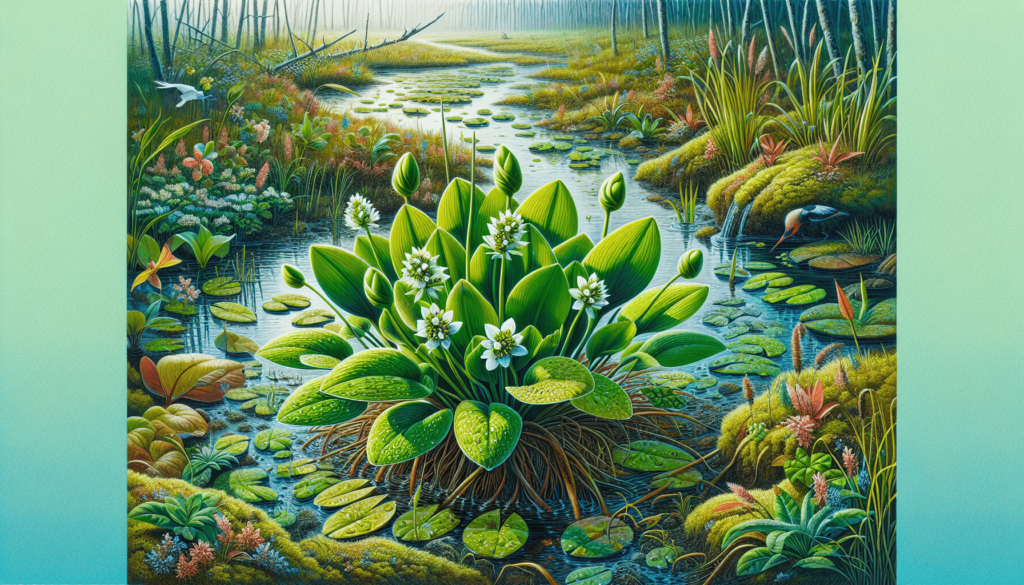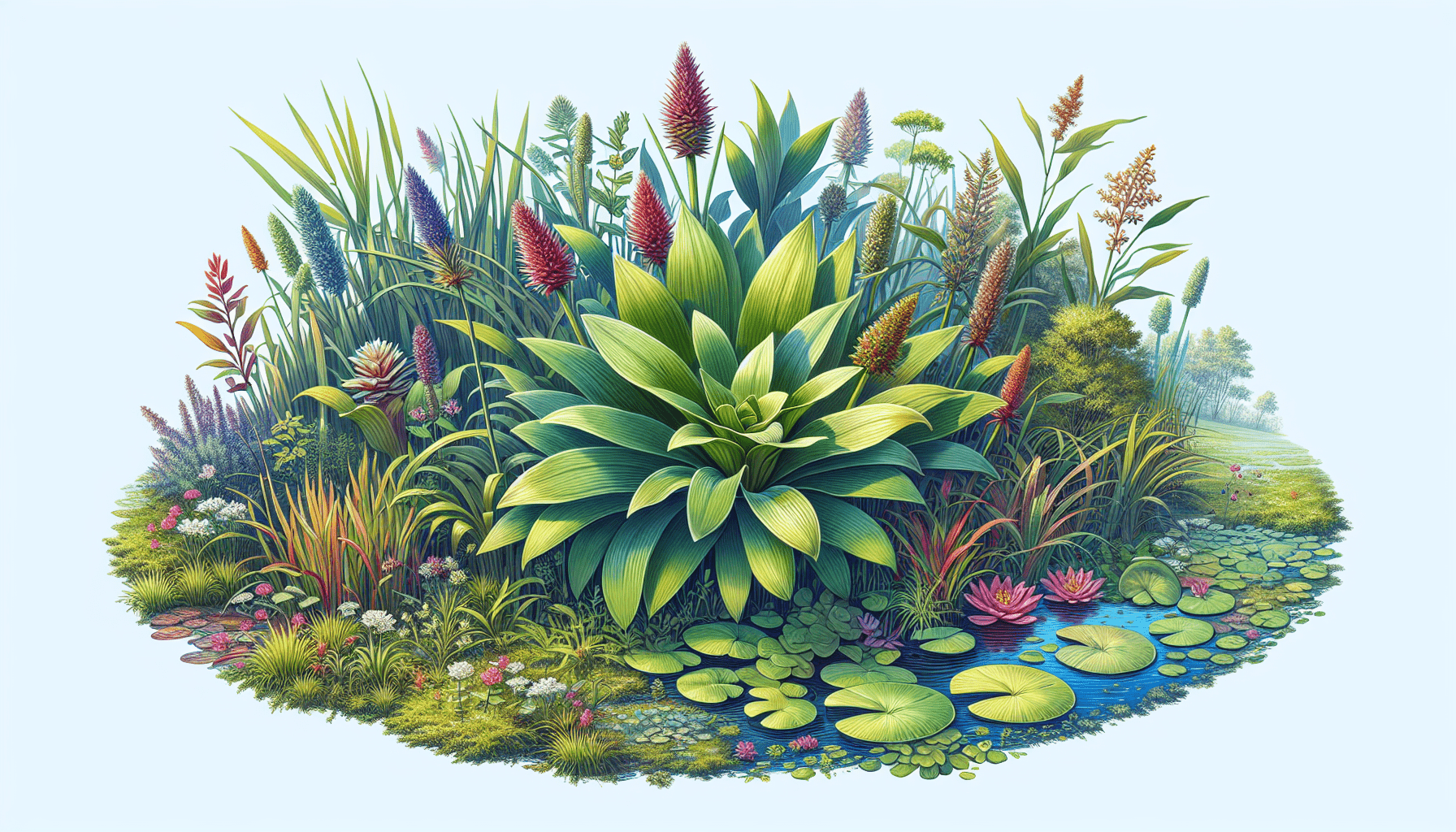Understanding the characteristics and viability of the aquatic plant known as Bunched Arrowhead is paramount for those seeking comprehensive knowledge within the field of aquatic botany. In this article, you’ll gain a thorough insight into its taxonomy, morphology, habitat preferences, and ecological significance. Reading this piece will enhance your grasp of the critical role Bunched Arrowhead plays in biodiversity and ecosystem stability. So, unlock your scholarly curiosity and immerse yourself in the fascinating world of aquatic plant ecology with this concentrated focus on the Bunched Arrowhead.
Overview of Bunched Arrowhead
General description
The Bunched Arrowhead, also known as Sagittaria fasciculata, is a unique perenne aquatic plant native to the southeastern United States. As a member of the Alismataceae family, this plant features distinctive arrow-shaped leaves and delicate white flowers. The Bunched Arrowhead typically grows in clusters, producing a bunched appearance, hence its common name.
Scientific classification
Scientifically, the Bunched Arrowhead is classified as Sagittaria fasciculata. Kingdom Plantae is the broad classification for this species, followed by the dicot class and order Alismatales. It is part of the Alismataceae family, indicating its relationship with other water-dwelling plants.
Alternative names
Although the most popular common name for Sagittaria fasciculata is the Bunched Arrowhead, it is known by several others. Some of these alternative names include Clustered Arrowhead and Fascicled Arrowhead. All these names derive from the unique structure and growth pattern this plant exhibits.
Habitat and Growth Conditions
Typical environment
Bunched Arrowheads typically thrive in wet, marshy areas or shallow aquatic environments. They are most commonly found in the Southeastern United States, specifically in South Carolina and North Carolina, where the climate and environmental conditions are ideal for their survival.
Soil requirements
For optimal growth, Bunched Arrowhead prefers a mix of sandy and clay soils with moderate organic content. They can tolerate poor drainage and prefer acid to neutral pH.
Water and light needs
Being aquatic plants, Bunched Arrowheads require a good amount of moisture and can grow in standing water. Full sunlight is essential for their healthy development, although they can also tolerate partial shade.

Physical Characteristics
Leaf structure
The leaves of the Bunched Arrowhead are perhaps its most recognizable feature – they are arrow-shaped, hence the name. They are also basal, with long petioles connecting them to the stem.
Stem and root system
The stems of the Bunched Arrowhead are slender, erect, and may reach a height of up to a foot or more. As for the root system, it comprises tubers that effectively anchor the plants in their watery environment.
Flower description
The flowers of the Bunched Arrowhead are delicate and white, often with three petals. They usually bloom from late spring to early summer, providing a beautiful contrast against the green foliage.
Life Cycle of Bunched Arrowhead
Growth stages
The lifecycle of the Bunched Arrowhead commences from a seed developing into a budding plant with arrowhead-shaped leaves. Over time, these buds grow into mature plants, which will later produce white flowers.
Flowering and seed production
Flowering typically occurs from late spring to early summer. After pollination, the flowers form achenes, essentially hard shell seeds, which are responsible for the plant’s reproduction. These seeds are then dispersed into their surroundings to grow new plants.
Lifespan and maturity
Usually, Sagittaria fasciculata matures within one to two years, depending on the environmental conditions. Its lifespan can range up to several years under favourable circumstances.

Adaptations
Survival strategies in aquatic conditions
The Bunched Arrowhead is exceptionally adapted to life in aquatic conditions. Their tuberous root system anchors them effectively in the watery substrate and also stores nutrients, allowing this plant species to thrive in water-laden environments.
Responses to seasons
Depending on the season, Bunched Arrowheads are able to adjust their growth and reproductive patterns. Typically, growth is most vigorous in the warmer months, while in cooler seasons, the plant goes dormant.
Defenses against predators
Their aquatic habitat provides Bunched Arrowheads with a natural defense mechanism, being inaccessible to several potential predators. Contributing chemical compounds in the plant may also deter herbivores.
Importance in the Ecosystem
Role in the food chain
Bunched Arrowheads play a significant role in their ecosystem. Their flowers provide nectar for several species of insects, while their seeds and tubers constitute a food source for various waterfowl and small mammals.
Impact on the habitat
Bunched Arrowhead plants play a vital role in stabilizing the aquatic ecosystem. Their root systems help control erosion by stabilizing sediments, maintaining water quality in their habitat.
Contribution to biodiversity
Given their ability to thrive in aquatic habitats, Bunched Arrowheads contribute to biodiversity. They create micro-habitats for a variety of aquatic creatures, thereby enhancing the overall biodiversity.
Usage by Humans
Culinary uses
In certain cultures, the tubers of the Bunched Arrowhead are consumed as a food source. They can be boiled, roasted or fried much like a potato.
Medicinal applications
In traditional medicine, various parts of the Bunched Arrowhead plant have been used to treat certain ailments. For instance, the leaves, when applied topically, have been used to soothe burns and stings.
Use in crafts and ornamental arrangements
With their distinct shape and beautiful white flowers, Bunched Arrowheads are often used for decorative purposes. They are an excellent choice for aquatic gardens and can be used in floral arrangements and crafts.
Conservation Status
Current threat levels
Currently, the Bunched Arrowhead is listed as an endangered species. Primarily, the loss of habitats due to urbanization and drainage of wetlands is causing a decline in their population.
Legal protections
Several legal protections have been put in place to protect this species. Both the Federal Endangered Species Act and a number of state laws offer protections, making it illegal to harm or disturb these plants without proper authorization.
Conservation efforts
Conservation efforts have been made to protect and restore the populations of Bunched Arrowhead. They include habitat restoration, monitoring populations, and cultivating plants in controlled environments for reintroduction into the wild.
Cultivation and Care
Propagation methods
The Bunched Arrowhead can be grown using seeds or vegetatively. If seeds are used, they must be thoroughly cleaned and planted in a wet medium. For vegetative propagation, portions of the root can be cut and planted in a suitable environment.
Maintenance needs
Bunched Arrowhead plants require minimal maintenance. They should be provided with full to partial sunlight, and the soil should be kept consistently wet to mimic their natural habitat.
Diseases and pests
Generally, the Bunched Arrowhead is resistant to most diseases and pests due to its aquatic lifestyle. Nevertheless, excessive dampness can lead to fungal growth.
Interesting Facts about Bunched Arrowhead
Unique characteristics
One of the most fascinating aspects of the Bunched Arrowhead plant is its ability to adapt to aquatic environmental conditions. Another unique characteristic is its arrowhead-shaped leaves.
Historical significance
The Bunched Arrowhead’s tubers were historically eaten by various tribal communities as a food source. In certain cultures, they also hold significant traditional medicinal value.
Influence on local culture
In the regions where it’s native, the Bunched Arrowhead routinely features in local folklore and art due to its distinctive shape and beautiful flowers. It’s seen as a symbol of the natural beauty of the area’s wetlands. However, its endangered status has also made it a symbol of conservation efforts.
